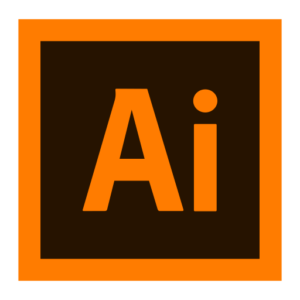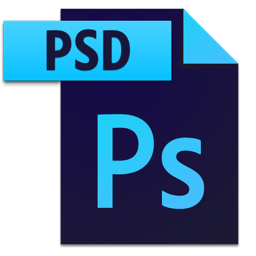An Ultimate Guide For Graphic Design File Formats
Being an entrepreneur don't you think you should have some knowledge regarding
graphic designs? Well, we believe besides the graphic designers, you are also responsible for your quality output. The designers pen down your thoughts and concepts creatively and finally create the file based on your requirement. Therefore, file extension plays a crucial role in developing your graphic design image.
Just like a minimum knowledge on
different types of a logo is required to construct an appropriate logo for your brand, it is essential for every marketer to know about the different file formats. Different types of interchangeable
graphic design file extensions or file formats are used by the professional graphic designers. And it is your responsibility to guide the designers with the appropriate file format that you want for your business.
AI, BMP, JPG and so on are the basic file formats that the designers use most frequently. Interesting right? Let us check out in details, what they are.
File Formats are divided into mainly three different categories and they are again sub-divided into multiple factors.
Standard File Formats
1. Adobe Illustrator (AI):
Illustrator image files are saved in vector format and thus are known as vector files. It is a tendency for almost every designer to give a huge preference to these vector files, in order to generate images of different file formats and sizes. But what's the specialty of using this format? Since the illustrator images are saved in a vector format, they can easily be magnified without losing any image quality. That's what makes them a standout picture quality from other file formats. Such a featured AI file is generally used in promotional product companies, silk screeners, banner companies and other third-party creatives. Won't you like to insert your name in this list?

2. Bitmap (BMP):
BMP file formats are compatible for DOS and Windows platforms. Such a format supports RGB, Indexed color, Grayscale, and Bitmap color modes and enables a bit depth for the image.

3. Joint Photographic Experts Group (JPG or JPEG):
Looking for a file format that can be compressed with superior compression techniques? It seems you are looking for JPEG format. The level of compression varies in resolution. For example – high-quality resolution is for desktop printing, medium quality is for web view and a low quality is used for email. Therefore, this standard format allows you to transfer files between a wide variety of platforms. However, it is worth to mention that with repeated compression the overall quality of a JPG image gets shrunk. JPEG image format may support CMYK, RGB, and Grayscale color modes, but neither support a transparent background nor support alpha channels.

4. Portable Document Format (PDF):
You must have come across this file format several times. Isn't it? Because it is a universal file format that is developed by Adobe Systems. This format is integrated with embeds fonts, images, layouts and both vector and bitmap graphics by any source document. Well, the most significant aspect lies in somewhere else. Unlike other file formats, these files can be shared, viewed and printed by anyone having the free Adobe Reader software. For all such exclusive features, this file is mostly recommended for commercial, digital as well as desktop printing.

5. Tagged Image File Format (TIF or TIFF):
TIFF/TIF is the home for every high-quality image. From this statement, you may conclude that this file format always appears in a large size. TIF format is widely supported across all platforms and endure CMYK, RGB, Lab, Indexed color, Grayscale and Bitmap color modes. You will often found this high-quality format in professional environments and commercial printing.

Standard Transparent File Formats
1. Encapsulated PostScript (EPS):
EPS file extension supports both vector and bitmap graphics and this vice-versa is supported by graphic, illustration, and page layout programs. Such a format is mainly used to transfer PostScript language image or artwork, generally a vector file, between applications. Like AI file format, EPS files can also be amplified to any size, without worrying about its image quality.

2. Adobe Photoshop Document (PSD):
PSD file format, used by professional designers, is used to create industry based bitmap graphics program that can only be read by Macintosh and Windows computers. This is basically used to create a vector logo that can be used across a large spectrum of applications. More specifically, PSD files are typically raster files composed of tiny dots, but when enlarged or reduced in size it loses its quality to a great extent.

Optional Transparent File Formats
1. Graphics Interchange Format (GIF):
Want low-resolution graphic design images mainly for web and email purposes? In this situation, perhaps GIF will solve your problem. The best thing about GIF is that almost all the browsers support this file format that uses the same compression technique of JPG to minimize the file size and electronic transfer time. Though this can be created with a transparent background, these files often suffer from pixelation. If you are willing to develop a banner, a logo or other web navigation items, it is better to save the image with this file extension.

2. Portable Network Graphics (PNG):
PNG files are high-quality bitmap images that are accomplished with lossless data compressions. In fact, this is considered as the perfect replacement for GIF file format. This transparent file format strongly supports 24-bit images and generates a transparent background without jagged edges. However, unlike others, this image format does not support non-RGB color spaces such as CMYK.
Hope these explanations have helped you a lot and now you will not have any kind of issues in choosing the appropriate file extension for your project. So, why are you squandering your time? Rather, spend your time searching for a professional
graphic designer to
outsource graphic design and development task.
 Suggested Blog:
Know More About Graphic Designing Software- it's Pros and Cons
Suggested Blog:
Know More About Graphic Designing Software- it's Pros and Cons









 Suggested Blog:
Know More About Graphic Designing Software- it's Pros and Cons
Suggested Blog:
Know More About Graphic Designing Software- it's Pros and Cons